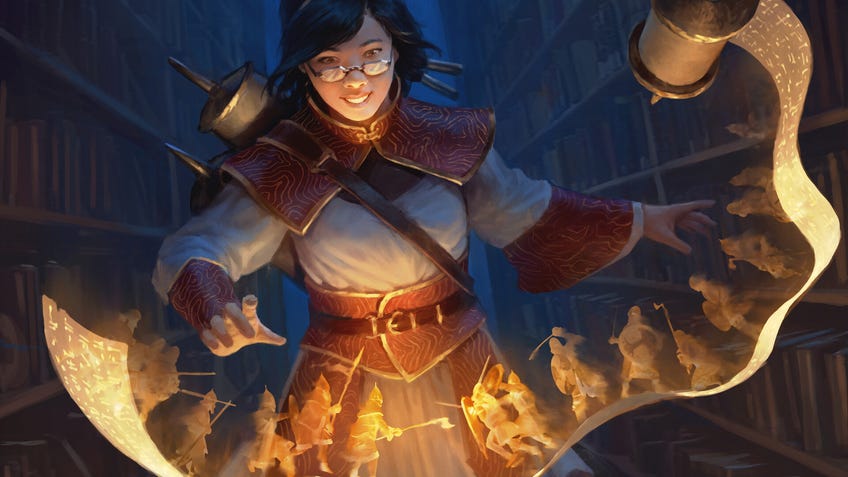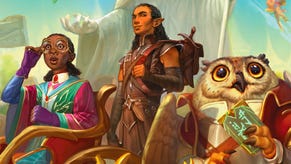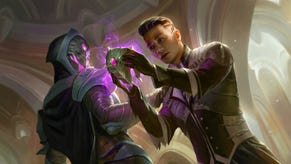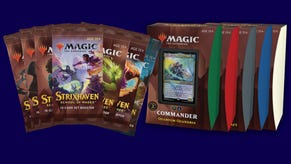Is Strixhaven a good entry point for the Magic: The Gathering newcomers? Well, it’s complicated.
For the cardboard curious.
Magic: The Gathering Strixhaven releases in physical form today and invites players into the ranks of fledgling mages at the eponymous school of wizardry. The plane of Arcavios is full of colourful characters, and the five colleges present a tension reflected in the mechanics, as well as the story.
Something that always comes up whenever the venerable trading card game deploys a new set is how it treats new players. Early buzz seemed to paint the Potter-themed batch as a good how-to-play tool, but both descriptions ended up missing the mark: Strixhaven is a fantastic set with only a few entry points one could call ‘beginner friendly’.
Starting with the points in its favour, Strixhaven does present a fresh plane (each set visits or returns to a world with unique magic, factions and existing conflicts) with blessedly few members of the core Gatewatch crew rearing their too-popular heads. Lilana Ve--err, Professor Onyx and a pair of precocious twins aside, the story told through cards and short fiction won’t rely on new player’s scouring deep into a wiki to work out the broad strokes.
Visiting a new plane also tends to keep the mechanical complexity of a set on the lower end. Established worlds, such as Zendikar or Ravnica, provide the design team a chance to revisit old keywords and build out their functionality. Zendikar’s Landfall - which activates whenever a land enters the battlefield - has appeared in four sets at this point and you can imagine the kinds of interactions it now permits. This isn’t always true - Throne of Eldraine proved a powerful exception - but Strixhaven’s fundamental rules construct an interesting but not overwhelming arena of play.
Speaking of the cards themselves, publisher Wizards of the Coast decided to split the pool of cards largely along five axes, each themed after the colleges of Strixhaven and their dual mana colour identities. Longtime players will recognise some of these combinations from Ravnica’s guild ecosystem, but this school produces some exciting results not seen before. Players first learning the game can use the college’s thematic identities as guides for complex deckbuilding, accessing higher-concept strategies through flavour instead of theorycrafting. This tricks those newcomers into eating their vegetables, so to speak. Or if you’ll allow me to mix metaphors: a spoonful of characterisation helps the mechanics go down.
This is also true for the themed Commander decks in the 2021 line, which includes Strixhaven cards not found in booster packs. The community has been largely positive on this year’s selection - The Professor of YouTube channel Tolarian Community College somewhat begrudgingly recommended them as incredible entry points into a fan-favourite format that also provide solid platforms for newcomers to experiment with deck brewing.

All that said, I’d be hesitant to call Strixhaven a particularly good entry point into Magic: The Gathering. While the mechanics are ostensibly simple, the cards themselves boast relatively more text than past sets - something that can intimidate fresh faces who need to read every card that hits the table. Emma Partlow has a great breakdown of this problem over at MTGRocks, which ties the issue to something Wizards of the Coast has been dealing with since the aforementioned Eldraine set. Even with several common phrases being truncated, such as shuffle or Ward, the average card is a chore to read - much less understand.
This set is also the latter bookend for a few mechanical throughlines. Modal dual-face cards - different spells or lands printed on each side that players can choose between when casting - began in Zendikar Rising and ran through Kaldheim to Strixhaven. The party theme carried through to a lesser extent but still leaves a mark on creature types. In many ways, Strixhaven ties a bow on design ideas that other players have been using in decks for most of a year at this point, using its release slot to clean up rules text and prepare for something bigger.
That something bigger is Adventures in the Forgotten Realms, the upcoming Dungeons & Dragons crossover set taking the place of the annual core set release. Call it controversial, but it feels odd to consider Strixhaven a good entry point when Magic: The Gathering will soon court the hands-down largest tabletop fandom. Adventures will likely draw deep on the established places and characters of the roleplaying game’s canonical world, translate commonly understood themes from Dungeons & Dragons into new keywords and lean hard into promotional material and events meant to entice those who have so far snubbed a card game published by the same company.
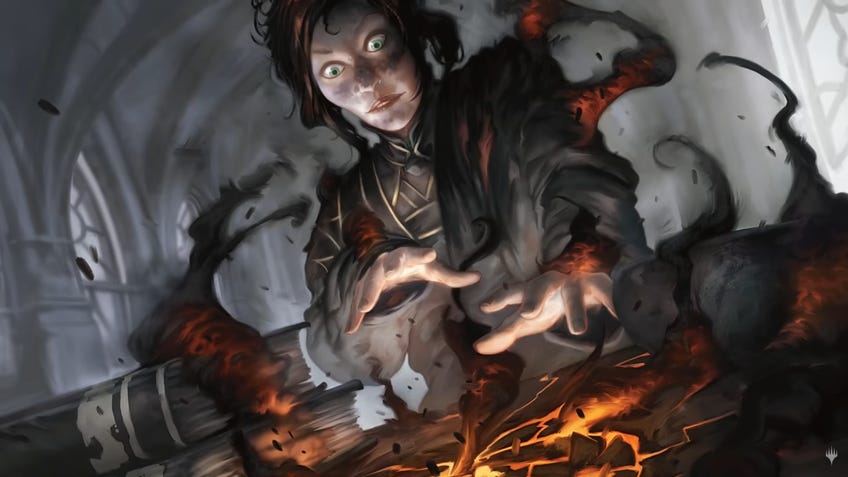
Currently planning to release on July 16, Adventures will also benefit from the ostensibly stronger rollout of vaccines in countries with the largest established Magic: The Gathering playerbases. Friendly local game stores will be reopening in earnest - at least in wealthy countries who hoarded access to vaccines - for a population that can gather (while still wearing masks and following CDC guidelines) to attend prerelease events, in-person Friday Night Magic and weekly drafts. Parent company Hasbro has not suffered under pandemic lockdown, but community scenes continue to do so. Adventures in the Forgotten Realms may prove to be the shot in the arm keeping many from shuttering their doors.
This exercise has revealed the persnickity nature of declaring any individual set as a good entry point for new players. With dozens of formats and several ways to engage with Magic: The Gathering, the decision is highly subjective. I first started playing for the art, and I kept playing because I considered myself too old for Pokémon. Later in life, I picked it back up thanks to college friends. All a prospective player needs is a supportive guide and welcoming peers, but a little genre hook or mechanical intrigue never hurts.
